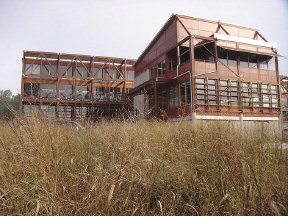The green movement is rapidly permeating our lives. The green movement's positive impact is visible everywhere (e.g., cleaner cars, energy efficient lights, etc.). The path to "green", however, is riddled with pitfalls. Following are recommendations for charting the path to green construction while avoiding the pitfalls.
Green construction encompasses two significant risks. The first risk results from using unproven technologies or a workforce improperly trained to utilize the new technologies. The second risk results from failing to achieve required levels of green.
With regard to the first risk, owners, architects and other green advocates are exerting increasing pressure on the construction industry to become more green. Indeed, many states including California, Illinois, New York, New Mexico, and Rhode Island have enacted legislation mandating certain levels of green. The adoption of green, however, must not exceed product testing and installation capabilities. Unlike the auto industry where a car can be recalled if a technology fails, most major construction systems are designed to stay in place for decades.
Using unproven technologies or insufficiently trained workers can have catastrophic consequences. Ironically, one of the best examples of such failures involved a green building; namely, the Philip Merrill Environmental Center (PME Center) in Maryland. The PME Center required the use of recycled materials and environmentally-friendly construction products. One such product, glued-laminated wood members (Parallems), was used as part of the roof truss system. The Parallems were sealed with an environmentally-neutral sealant. Unfortunately, the Parallems suffered extensive premature rot resulting in millions of dollars of repairs.
The second risk of green construction involves failing to achieve required levels of green. For example, in Maryland, a developer lost $700,000 in tax credits because the project failed to achieve a Silver LEED certification. In New York, the owners of what was supposed to be a leading eco-friendly condominium project sued because they claimed the building was not green enough.
The big question, therefore, is how does one reap the benefits of green construction while avoiding the pitfalls? The answer is threefold: (1) stringent prequalification process, (2) drafting focused specifications, and (3) using contract language that sets out proper obligations and responsibilities.
In terms of the prequalification process, it is vital to ensure the architect and contractor have relevant Green construction competencies. The owner must verify the architect is, indeed, an established green expert by carefully interviewing a pool of architects and checking references. Thereafter, the owner and architect must carefully screen potential contractors. One method of screening contractors involves using a prequalification statement precluding potential contractors lacking sufficient green construction experience or sufficient experience to install the anticipated technologies.
In terms of the specifications, no product should be specified unless both the product and the manufacturer have a long and distinguished track record. Moreover, no product should be specified unless the manufacturer provides a detailed warranty guaranteeing the product's longevity and claimed energy savings.
In terms of the contract language, it must contain language that does more than just specify a level of green. Rather, the contract must use language that identifies the process for achieving the desired result, places responsibility on identifiable construction team members for achieving those mandates, and establishes consequences for those that fail. The contract should also contain language permitting the owner to reject any subcontractor who, in the owner's or architect's judgment, has not demonstrated sufficient competency to install any specified product.
In short, charting the path to successful green construction involves ensuring member competency, selecting proven technologies backed by strong warranties, and drafting contracts that clearly identify obligations, responsibility, and accountability.
Drew Colby co-chairs the construction group and is of counsel at Partridge Snow & Hahn LLP, Westborough, Mass.
Tags:
Charting successful green construction while avoiding the pitfalls
November 29, 2012 - Front Section










